I recently purchased a Schott BG40 IR cut filter, so I thought I'd do a comparison to see how it stacks up against my B+W 486 UVIR cut filter and Tiffen Hot Mirror filter. The purpose (at least for me) of a UVIR cut filter is so I can use my full spectrum converted camera for taking 'normal' photos.
Transmission graphs for the filters can be viewed at:
The BG40 does not cut UV (much), which you might think would cause a problem with UV contamination when shooting with a full spectrum camera. However the main light sources I use (full spectrum flash and the sun) output very little UV compared to visible and IR, and so in practice this is not a problem.
The Tiffen T1 was purchased after I started these tests, and so is not included in the 'studio' tests below, but is included in most of the later 'real life' tests. From the transmission graph you can see it isn't suitable for removing IR when shooting with a full spectrum camera, however for some reason I didn't think to check the transmission graph before I purchased it. It is marketed as a Breakthrough Solution for IR Pollution
and it contains no dichroic coating; therefore, it will not vignette green, magenta or cyan at wide angles
, so it sounded like a good filter.
Please note there are a lot of comparison images in this post!
Wide-angle test
To compare the filters I just photographed a large sheet of card. My first test was using a Fuji 14mm lens on my full spectrum X-M1 camera. I wanted to check with a wide-angle lens as I know this is where the B+W 486 filter has problems.
The photos were lit with a full spectrum modified flash. When processing they were white balanced using the grey patches on the colour card.
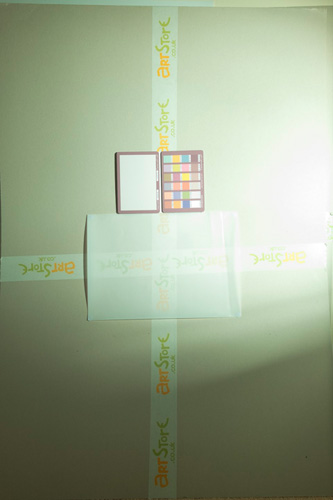
With no filter the image contains a lot of IR.
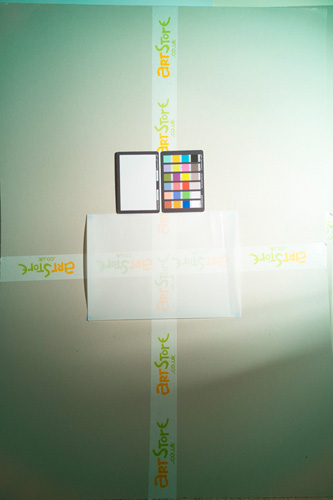
The B+W 486 filter gives strong cyan vignetting on wide-angle lenses like this.
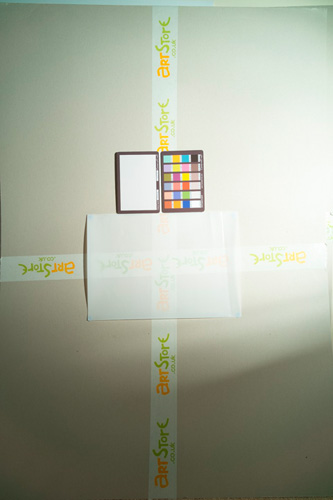
The Tiffen hot mirror has some cyan vignetting, but not as bad as the B+W. On the other hand, it is passing more IR.
Flash test
I wondered what would happen if I filtered the flash rather than the camera. I have a cardboard snoot for my flash that takes 77mm filters.
Filtering the flash is only effective when the flash is the dominant light source. These tests were carried out in a dark room.
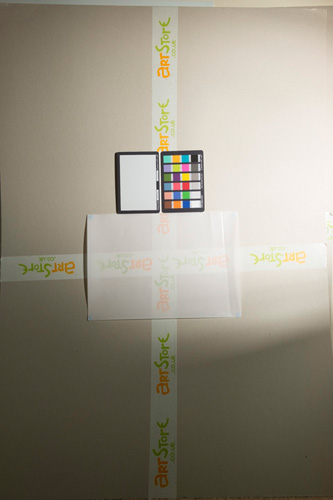
BG40 looks much the same as when on the camera.

The Tiffen also produces very similar results as when on the camera.
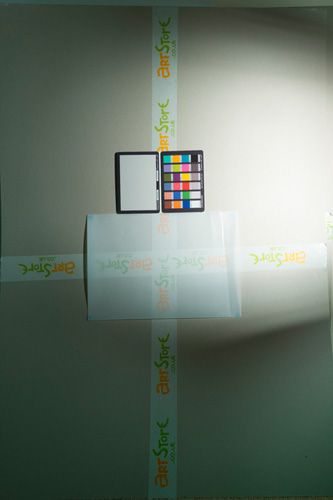
The B+W result is not directly comparable because my flash snoot is designed for 77mm filters, while my 486 filter is only 67mm. So we get some vignetting from the smaller filter size. However, again, the result still looks pretty similar to what we got when using the filter on the camera.
Standard test
This test was taken with my 27mm lens. This shows how the interference-based UVIR cut filters (B+W & Tiffen) compare to the absorbtive based IR cut BG40 filter on a lens that is not particularly wide and also passes UV (most lenses block UV).
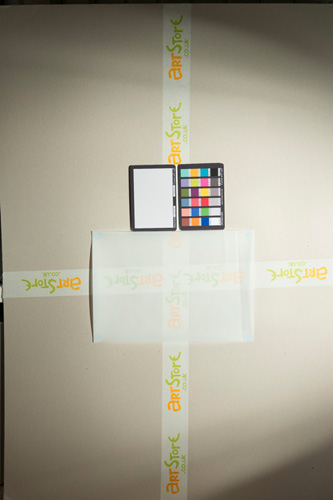
To start with, here's how it should look, taken with a standard unconverted camera.

The BG40 looks pretty good, but the reds aren't as deep, as the BG40 has lower transmission in the deep reds than the standard hot mirror filters used in cameras.

The B+W 486 has a slight cyan vignetting, but is pretty decent at this angle of view.

The Tiffen Hot Mirror still has its problem of passing too much IR.
Resolution
First test is on my A7R II, which is not a full spectrum camera. But it does have quite a high resolution, so should be a good test of any degredation in resolution caused by the filters. Lens used was the Canon 100mm macro at f/7.1. I photographed the printing on a cardboard box, below are 100% crops.

Tiffen hot mirror looks good

The B+W 486 gives a good result, the same as the Tiffen

Pretty good result from the BG40, but seems to loose a bit of resolution compared to the other two filters. The image was also heavily cyan tinted, but that's not really an issue since you wouldn't use this filter with an unconverted camera in real life.
Second test is with my full spectrum converted Fuji X-M1, which 'only' has 16MP to test with. This time images were taken with a 75mm N El-Nikkor, a lens that passes UV, at f/8. A similar subject (cardboard box) and 100% crops again.

Tiffen Hot Mirror
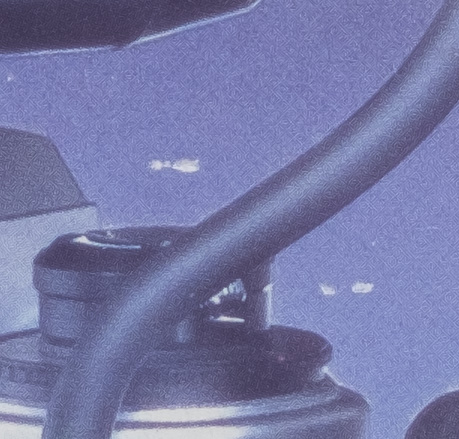
Tiffen T1
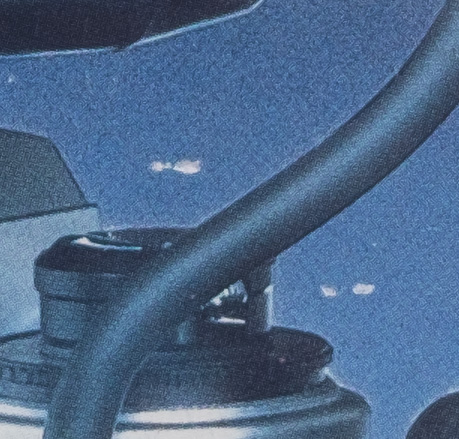
BG40

B+W 486
Not a lot of difference.
Unfortunately it's hard to conclude anything from this test, other than all 3 filters are pretty similar. If I get a higher resolution full spectrum camera at some point I'll be able to do a more meaningful comparison.
Flare
First test with flash out of frame and pointed towards the camera.
Next test with flash in the frame.
In these tests, the filters perform pretty much the same in terms of flare. These were taken with the 75mm N El-Nikkor on the full spectrum X-M1, and a full spectrum flash was used.
However, I found I was getting a ring of flare when shooting with the Fuji 14mm lens, with all of the filters.

Unconverted camera with B+W 486
The solution was to use a ring of black paper between the lens (well actually between the step-up ring) and filter. This was a circle of black paper the same size as the filter with a hole in the middle just large enough for the lens to 'see' through without vignetting.
My guess is that light hits the front of the lens, bounces up, reflects back off the underside of the filter, and ends up creating this ring of flare. I've only found this problem with the Fuji 14mm, however I haven't tested with a large number of lenses. I also tested my Olympus 24mm/2.8 with the B+W 486 on my Sony, and that didn't have the flare. So it doesn't seem an effect you'd see on all wide-angle lenses, just the Fuji 14mm so far as I can tell.
Wide-angle 'real-life' test 1
This first example was taken using the wide-angle Fuji 14mm lens on my converted X-M1.
Despite using the black paper ring to avoid the ring type lens flare caused by the filter(s), you can see the effect is still quite bad on the B+W and the Tiffen Hot Mirror. Both the B+W and Tiffen Hot Mirror use the same type of IR blocking technique (dichroic coating to reflect IR).
Everything else is pretty much what we'd expect based on the earlier 'studio' tests. The Tiffen T1 is additionally featured here, but as you can see, doesn't do a very good job. The reason for this is that it is designed for use on cameras that have a weak IR blocking filter in place, rather than no IR blocking filter at all. It starts passing IR again around 840nm, so there is quite a lot of IR contamination (I don't know exactly how deep into the near-IR my camera can see, but likely it is up to around 1000nm).
Wide-angle 'real-life' test 2
Another test with the Fuji 14mm. Similar results to the previous image, except no sign of the ring of flare. The black ring of paper to try and avoid flare was used again.
Wide-angle 'real-life' test 3
Final test with the Fuji 14mm. Black paper to reduce likelihood of flare was used again. This time I am including the out of camera images, so you can see what they are like before white balancing, and also corner fixed images. CornerFix is a piece of software you can run your images through to remove the cyan vignetting such as produced by the B+W 486 and Tiffen Hot Mirror on wide angle lenses.
Out of camera:
White balanced:
White balanced & Corner fixed
Normal 'real-life' test 1
This test was taken with the Fuji 27mm. The cyan vignetting on the B+W 486 and Tiffen hot mirror images is hardly noticeable.
Normal 'real-life' test 2
Another test with the Fuji 27mm. The Fuji 27mm passes UV light quite well, but the BG40 (which passes UV) image doesn't appear to affected by UV contamination. This is simply because so little UV light gets through the atmosphere.
Normal 'real-life' test 3
This test was with the Nikon 50mm/1.4 D @ f/2. Despite shooting into the sun, flare is no worse with the filters than no filter at all. The unconverted camera image does have less veiling flare, however the veiling flare appears to be down to the sensor / (lack of) filter stack in the converted camera, since the same level of veiling flare can be seen in the no-filter image.
Macro / Close-up 'real-life' test
These were all white balanced on the white portion of the lowest petal. The BG40 image appears much duller than the Tiffen & B+W. This is because it doesn't transmit so much light, especially at the red end of the spectrum.
You can see IR contamination in the Tiffen Hot Mirror image, the coloured part of the flower is brighter, but it is most noticeable in the leaves. The B+W 486 image is clearly the best.
Conclusion
Unfortunately there doesn't appear to be a 'good' visible light filter. The B+W 486 (and Tiffen Hot Mirror to a lesser extent) are a pain to use on wide-angles due to the cyan vignetting. The BG40 doesn't have this problem, but looses deep red colours and has a strong cyan cast (though this is easy to correct).
The B+W 486 is clearly better than the IR leaky Tiffen Hot Mirror. And the Tiffen T1 is pretty useless - obviously it wasn't designed with full spectrum cameras in mind.
So for the moment I think you're still best off with two cameras - one for visible work and one for UV / IR work. I will continue using the B+W 486 for my macro / close-up Vis-UV-IR comparison images (it's not practical to switch cameras between full spectrum and visible only for that work).
One last thing to mention is the Kolari Vision Hot Mirror filter. While I haven't used this filter, from its appearance, description, and transmission graph, it looks like it should perform similarly to the BG40, perhaps with slightly less red reds.



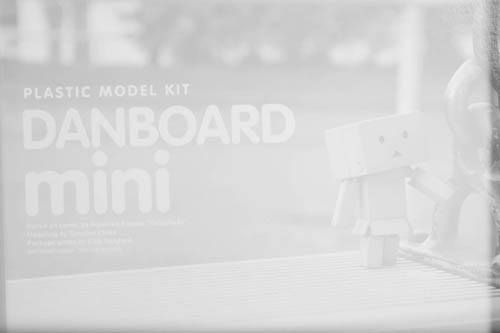



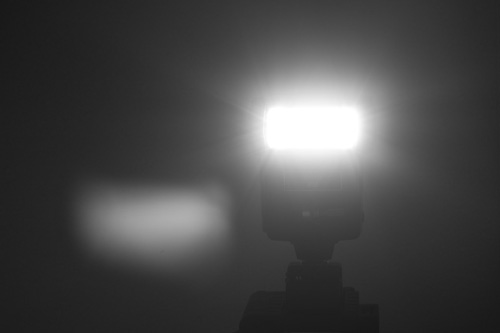




























































Hello,
This is regarding you article on UV-IR cut off filters for your full spectrum camera… I have a full spectrum camera on its way, and I have found your article useful in considering what cut off filter I may get. By any chance do you know the results or anything about Hoya’s UV-IR cut off filter?
Tracie